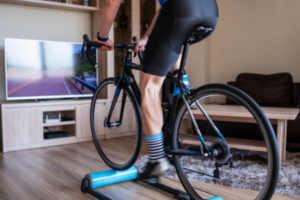
Heart Rate Variability
There are two kinds of endurance athlete: Those who don’t know what heart rate variability (HRV) is and those who are about to find out.
For as long as hearts have existed, these vital organs have contracted at a slightly erratic tempo, and it is this slight play in rhythm that we measure as HRV. A much newer phenomenon is the active monitoring of HRV by endurance athletes, which is done because heart rate variability itself is variable in individuals, and these changes contain information about health, fitness, stress, and recovery.
So, that’s your primer on HRV. If you’re interested in learning more about the basics of heart rate variability, just Google the term—there’s plenty of good (and some bad) information online. The purpose of this article is to tell you about a new HRV-related study that grabbed my attention. Conducted by an international research team that included Marco Altini of HRV4 fame, the study was actually a single-subject validation test of a new functionality incorporated into the HRV Logger app.
In a previous study, Bruce Rogers of the University of Central Florida, who was also involved in the study under discussion, identified a specific HRV correlate of the aerobic threshold (aka first ventilatory threshold, or VT1) as determined through laboratory testing. The mathematics involved are highly advanced and far beyond my depth, but I’m confident that others who are good with numbers will test the validity of Rogers’s calculations. In the meantime, what he and Altini have done with them is pretty cool. As you may know, the aerobic threshold represents the dividing line between low and moderate intensity. So, the new functionality that’s been built into HRV Logger enables the app to pinpoint an athlete’s current HRV and track intensity distribution in real time. Specifically, a prior validation study linked the aerobic threshold to a DFA-alpha1 measurement of 0.75.
There are multiple advantages to this functionality. One is that the measurement involved is a better representation of global physiological demand than heart rate (or just about any other measurement that can be taken during exercise in the field). Another is that it obviates the need for formal testing outside the context of normal training. A third advantage is that the app’s aerobic threshold estimates track day-to-day and even within-session changes in your aerobic threshold. A lot of athletes don’t recognize that the physiological events such as VT1 to which we fix our training zones are themselves not fixed, but tend to float. Zones based on testing don’t float, but HRV Logger’s estimates do. Also, these estimates are impervious to cardiac drift and other factors that warp the linkage between heart rate and true physiological intensity. And finally, DFA-alpha1 estimates of aerobic threshold are transferrable to any aerobic exercise modality. Whether you’re cycling, running, or cross-country skiing, your VT1 is 0.75.
Anyway, the validation protocol—which was completed by a 41-year-old male former professional triathlete—consisted of three sessions. The first was a standard graded cycling test to exhaustion. This was followed by a non-exhaustive stage test in which the subject completed four, six-minute stages at incrementally increasing power outputs spanning from below to above the aerobic threshold. The final session was an hourlong easy ride. The results obtained by the HRV Logger app were compared against an analysis of the raw HRV data using Kubios HRV premium software and also against the results of a laboratory VT1 test. When the numbers were crunched, Altini and his collaborators found a “reasonable clinical agreement between conventional retrospective calculation of the HRVT derived through Kubios HRV software to that of a real-time app” and a high level of agreement between the app’s estimate of the subject’s aerobic threshold and the VT1 power and HR values of 220 watts and 148 bpm obtained through laboratory testing.
As the 80/20 guy, I’m most excited about DFA-alpha1’s potential use in enforcing a prescribed intensity balance. With habitual use, athletes can track accumulated time and percentages of weekly training time at and above low intensity. This information will be especially helpful to athletes in special situations, such as off-road triathlon specialists who have no hope of staying at low intensity during long rides on hilly trails and want to incorporate them in a way that doesn’t skew their overall intensity balance.
I know this article reads like an infomercial for the HRV Logger app, but I assure you it’s not. Although I have corresponded a bit with Marco Altini in the past, I have no relationship with his company and nothing personal to gain from promoting his app. What I do have is a long history of promoting products I come across that, in my opinion, meet unmet needs for athletes. Speaking of which, have y’all shelled out for an ElliptiGO yet?
